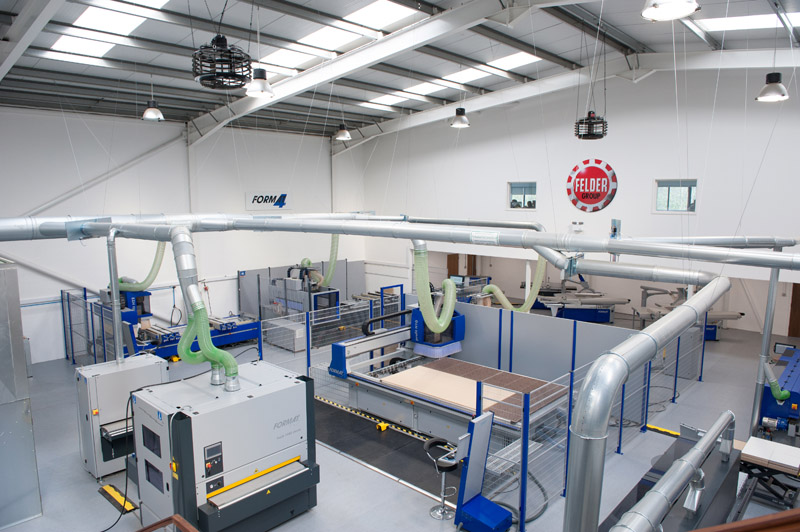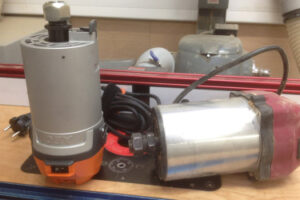There really isn’t any cause for alarm, I’m pretty certain this isn’t the end of woodworking as we know it, but there seems to be a bit of a revolution happening in the world of woodworking machinery.
Computer Numerical Controlled (CNC) machinery is hardly a new thing – I can remember taking over a joinery workshop in Battersea about 25 years ago, which had become vacant because the previous tenants had invested their life savings into CNC technology. Unfortunately for them, they had been unable to make their new, highly complex, super-efficient machine productive enough to pay its way and sadly they ended up having to hand back the keys to their hungry, automated beast, and ultimately, also to their workshop.
Woodworking machinery showrooms have always been pretty predictable places, band-saws, table saws, planer/thicknessers, morticers, and, for the more adventurous, spindle moulders and perhaps even a planer or moulder with multiple cutter heads. The main decision that had to be made was generally ‘how much money do I have to spend?’ which generally had a direct correlation to how big a machine you could buy and how many bells and whistles it would be fitted with, in short, it was all very familiar and predictable.
So what makes me think that things are changing? About 10 years ago I paid my first visit, up the M1, to the Felder showrooms, no cause for alarm, just the usual suspects spread across the expansive, airy, showroom, ranging from the affordable to the aspirational, but generally just the usual suspects and no great surprises. Some years later I paid another visit to these same showrooms to demonstrate a planer fitted with a ‘Silent Power’ cutter block, a new innovation for a standard machine, so no cause for concern. But I did notice a large box-like imposter had muscled its way in and was nestling quietly against one of the showroom walls, this was not something I immediately recognised – a CNC machining centre! My most recent visit, just a few weeks ago, revealed something of a transformation, the floor of the showroom was now awash with wall to wall, state of the art, CNC machinery, all complete with impressive looking control panels, flickering VDU’s and very cool-looking blue downlighters. Where were the planer thicknessers and table saws that I had come to look at? Upstairs on the new mezzanine! It’s not that the standard kit had been side-lined but it’s seemed that Felder’s focus had shifted over the last few years to include many more of these, rather imposing, bits of kit.
But there’s no need for the smaller furniture maker to panic, as the joiners in Battersea discovered to their cost, CNC machines are at their best when used for higher volume repeat work, they have to be kept busy so that their not inconsiderable capital cost can be used effectively to increase productivity and profit margins, not cause bankruptcy. This doesn’t mean that CNC technology can’t be utilised to some degree by the modern, small furniture maker, but a pre requisite of taking full advantage of CNC is that you have a good understanding of CAD (Computer Aided Design) or at least have access to someone who has mastered what is surely a dark art.
CNC is not really designed for making one-offs but it is very good at making extremely accurate formers and Templates, and curved components that incorporate compound angles and tricky joints are a breeze. Set-up time for these modern machines for each job is not quite the time consuming process that it used to be and you might find a local company with CNC kit that’s happy to produce odd pieces for you which you might find will open up all sorts of new design opportunities.
So, ‘Don’t Panic!’, modern CNC technology is a positive development, it doesn’t have to be an all-or-nothing thing and as a small furniture maker you’ll still be able to show off all those hard-won hand skills.



